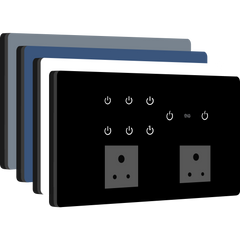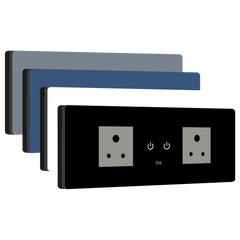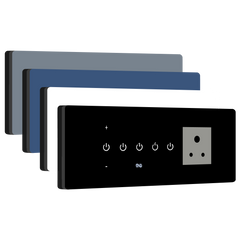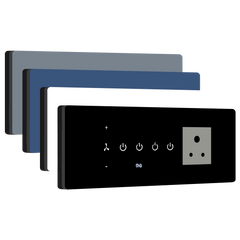Instant Response Time: The Key to Seamless Smart Home Control
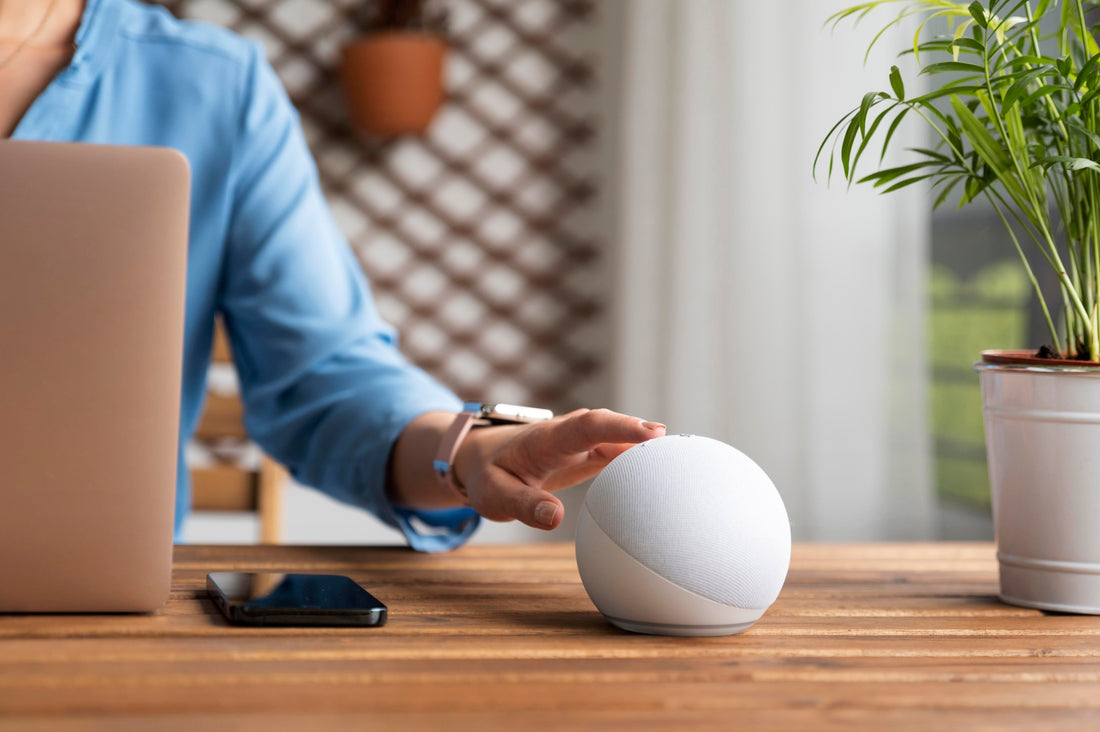
1. Definition
Instant response time in the context of smart home devices, including smart switches, refers to how quickly a device reacts to user commands or automation triggers. When you issue a command—whether through an app, voice assistant, or manual control—the smart device should execute the action almost immediately. Instant response time is crucial for a smooth and seamless smart home experience, ensuring that your devices, such as lights, fans, and thermostats, function in real-time without delays.
2. Key Takeaways
- Instant response time ensures that smart switches react immediately to your commands, whether they’re voice, app, or physical controls.
- It eliminates frustrating delays, creating a smooth user experience when interacting with smart devices.
- An ideal smart home experience relies on instant response times to maintain a high level of efficiency and convenience.
- Instant response time is important for both manual controls and automated triggers, such as setting schedules or responding to sensor inputs.
- It’s particularly essential in critical situations like safety alerts or automated energy-saving actions.
3. Why Instant Response Time Is Important
Instant response time plays a key role in ensuring that your smart home devices function optimally. Here are some reasons why it’s essential:
-
User Experience
When controlling smart devices, whether through voice assistants or mobile apps, users expect instant feedback. Imagine issuing a voice command to turn on a light, and the action is delayed by several seconds. This can cause frustration and hinder the overall experience. Devices that respond instantly to commands deliver a more intuitive and satisfying interaction, encouraging further use and trust in the smart technology. -
Seamless Automation
Smart homes often rely on automation—predefined actions triggered by sensors, schedules, or user behavior. If there’s a lag between the trigger and the action, it can disrupt the entire system. For example, if a smart light is scheduled to turn off when motion is no longer detected but takes a few seconds to react, it could leave the light on longer than needed, wasting energy. Instant response time ensures that automation remains seamless and effective, helping you save time and energy. -
Energy Efficiency
Instant response time contributes to better energy efficiency. For instance, when connected to a home automation system, smart switches with instant response times can react quickly to changes, such as turning off lights when a room is vacant or adjusting the thermostat when you leave for the day. This prompt action helps reduce energy consumption and lowers your utility bills. -
Enhanced Safety and Security
Instant response times are crucial in safety and security scenarios. For example, in the event of an emergency, such as a fire or a break-in, your smart home system needs to react quickly—whether it’s triggering lights to illuminate a dark path or sending an alert to your phone. A delay in response could lead to critical moments being missed. Instant action can make a difference in enhancing safety for your family and property. -
Remote Control Convenience
A key feature of smart home devices is their ability to be controlled remotely. Whether you’re at work, on vacation, or lounging on the couch, you expect that your devices will respond instantly to your commands. If a smart switch or device lags when you try to control it remotely, it defeats the purpose of having smart devices. Instant response time allows for reliable control from anywhere, at any time.
4. Example/Use Case
Consider this example: You walk into a room and say, “Alexa, turn on the lights.” With instant response time, the lights immediately brighten as soon as the command is issued. There is no delay, so the room feels well-lit and welcoming the moment you enter. In contrast, if there’s a lag, you might wonder if your command went through, leading to unnecessary repetition of the request or frustration.
Another example: Imagine you have automated your lights to turn off when you leave the house. As soon as the motion sensor detects you leaving, the lights should instantly switch off to save energy. A delay in this response would waste electricity and undermine your energy-saving goals.
5. Frequently Asked Questions (FAQs)
-
Why is response time important in smart switches?
Instant response time ensures that your commands, whether given manually, through an app, or via voice assistant, are executed without delay. This makes your smart home more efficient, intuitive, and enjoyable to use. -
What causes delays in response time for smart devices?
Delays can occur due to network issues (e.g., weak Wi-Fi), slow app communication, or device compatibility problems. Ensuring a strong network connection and choosing high-quality devices can help minimize these delays. -
How can I improve response times in my smart home?
Ensure your devices are connected to a fast, stable Wi-Fi network, and make sure they’re compatible with your home automation system. Also, choose smart switches that are designed for low-latency responses to ensure real-time reactions. -
Does instant response time increase the price of smart switches?
While smart switches with instant response times may be priced slightly higher than basic models, the benefits they provide in terms of convenience, energy savings, and reliability make them well worth the investment. -
Is there any risk of smart switches with instant response time overreacting?
No, instant response time is about accuracy and efficiency, not excessive action. Well-designed smart switches are calibrated to react appropriately to your commands and automation triggers.
Looking for a smart home solution that’s responsive and efficient? Explore Iotics Smart Switches with instant response time and experience the convenience of a seamless home automation system. Shop Now.
7. Related Terms
- Home Automation
- Smart Home
- Voice Control
- Energy Efficiency

